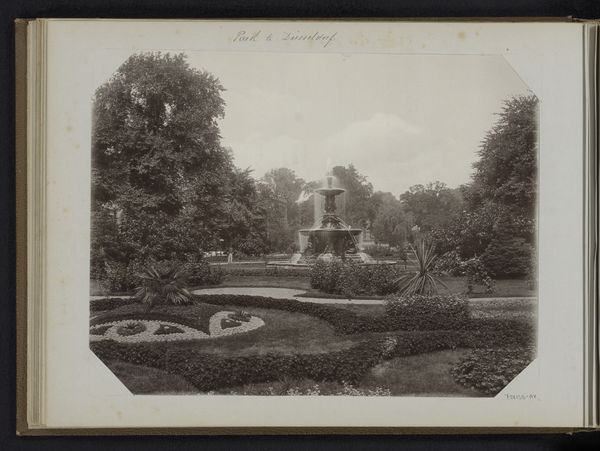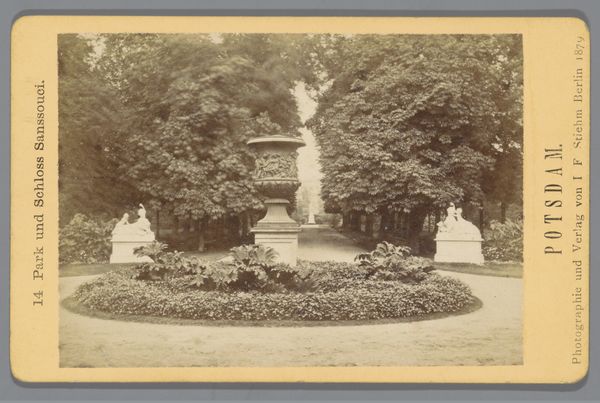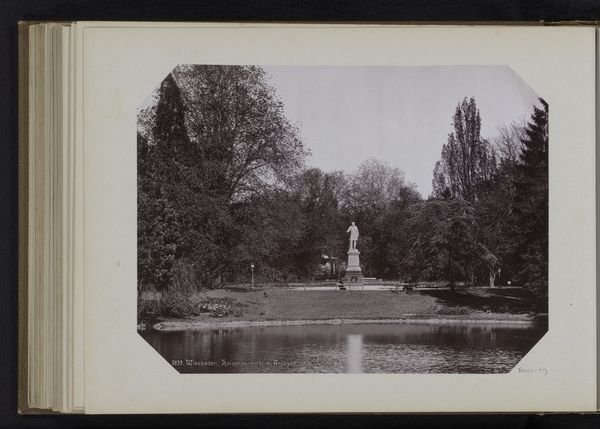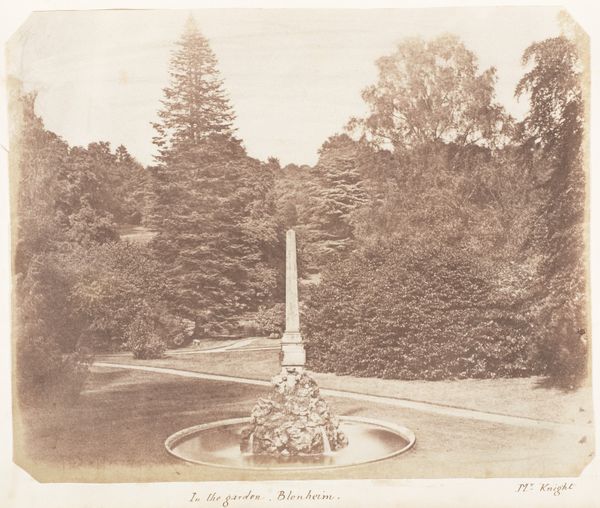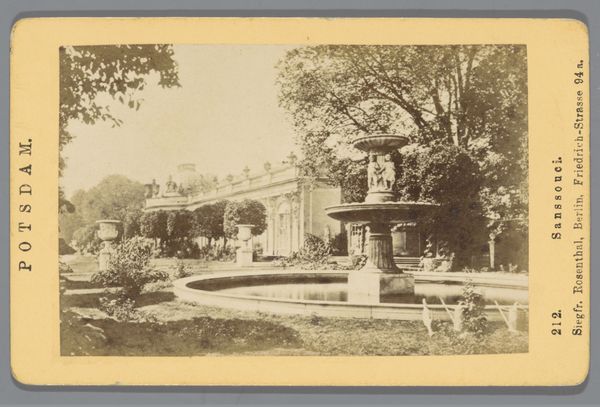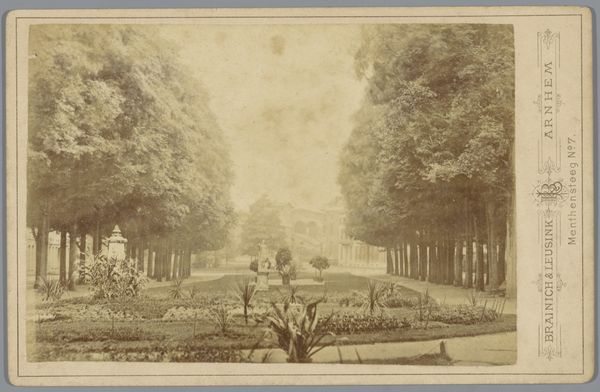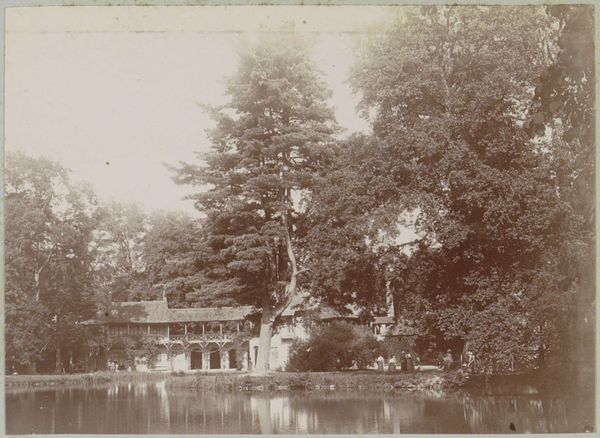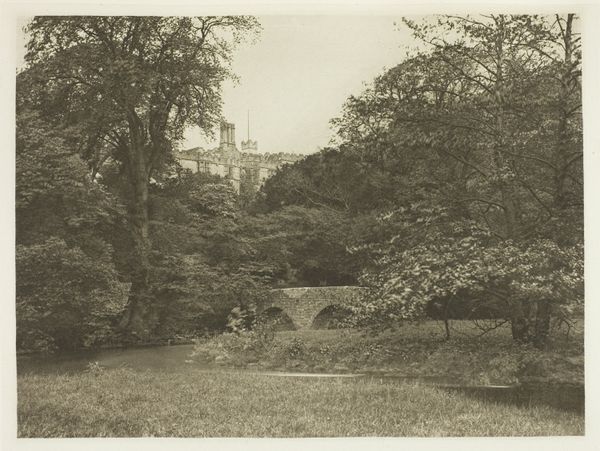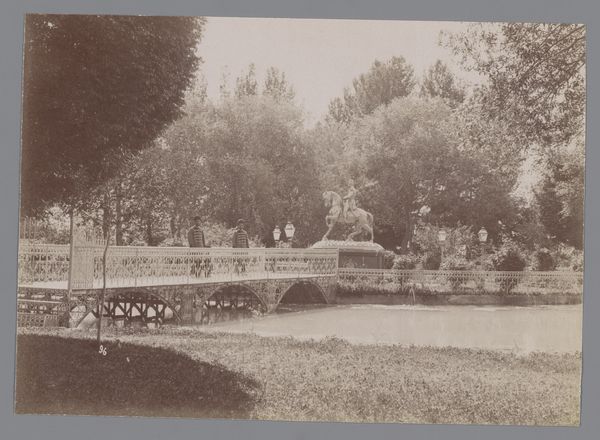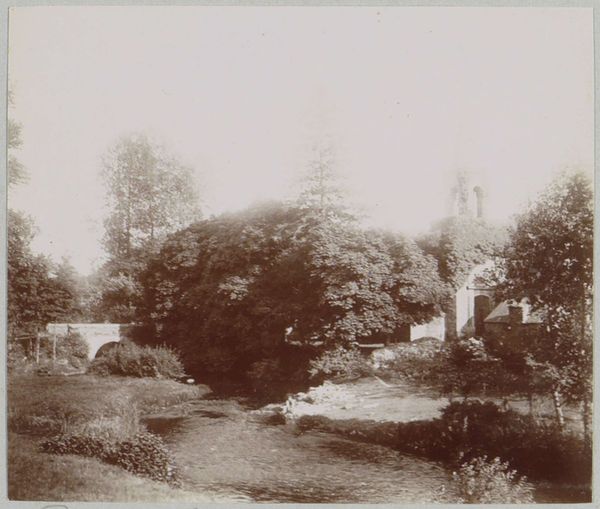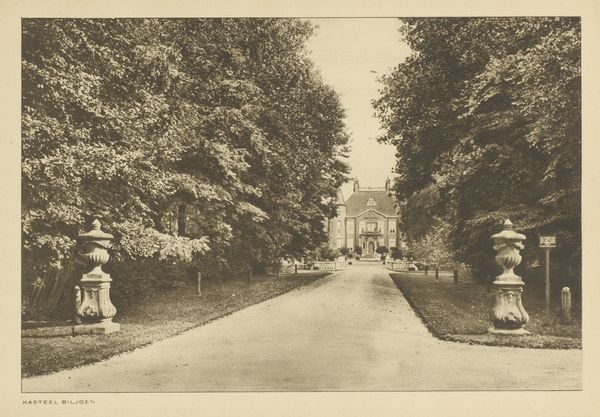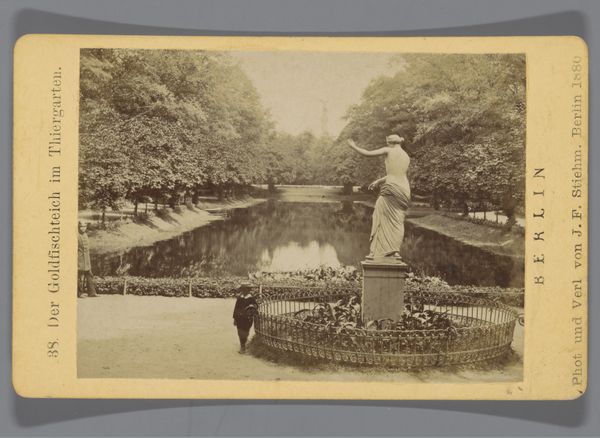
Dimensions: height 67 mm, width 106 mm
Copyright: Rijks Museum: Open Domain
Curator: Here we have a gelatin-silver print from 1879 by Johann Friedrich Stiehm. It is titled "Park Sanssouci met ruiterstandbeeld, Potsdam," depicting a park landscape. What are your initial impressions? Editor: A curious serenity pervades. The photograph’s composition directs the eye precisely: a bridge, a pathway, statues receding into the middle distance, finally culminating in the implied mass of architecture barely visible. A linear parsing into zones of attention, if you will. Curator: Indeed, it is a constructed vision of tranquility. The park, meticulously arranged, echoes the neoclassical ideals popular at the time, embodying order and reason. The equestrian statue, bathed in light, probably carries layers of meaning, a visual representation of power and authority within this sculpted landscape. Editor: Precisely, though it is more interesting how the statue, combined with the sepia tonality, introduces an immediate tension between past and present. Stiehm’s decision to employ photography rather than, say, painting, infuses it with a curious immediacy – a "punctum" that traditional landscape painting lacks. The textures are crucial. Curator: Good point! And this tension resonates through time. Gelatin-silver prints allowed for finer details, making the photographic image sharper and clearer. These technical advancements were reshaping visual culture then and influencing how people perceived and documented the world around them. Editor: Yes, it invites close reading. See how Stiehm leverages the limited tonal range, using the water's surface almost as a compositional foil. It mirrors the sky just enough to enhance a spatial ambiguity. He is playing with perception and depth using rather simple means. Curator: The park itself also holds deep cultural symbolism, I think. It’s a site of leisure, but also a representation of cultivated nature—nature tamed by human intellect. It almost functions as a stage where ideologies of nation and empire played out. Editor: I find the photograph's structural elements even more illuminating now that you've framed them so succinctly. It speaks to the nature of looking, directing us and structuring space in precise ratios. Curator: Ultimately, viewing this image brings the weight of history into focus. Editor: An image parsed now echoes and diverges into new configurations with our present.
Comments
No comments
Be the first to comment and join the conversation on the ultimate creative platform.


